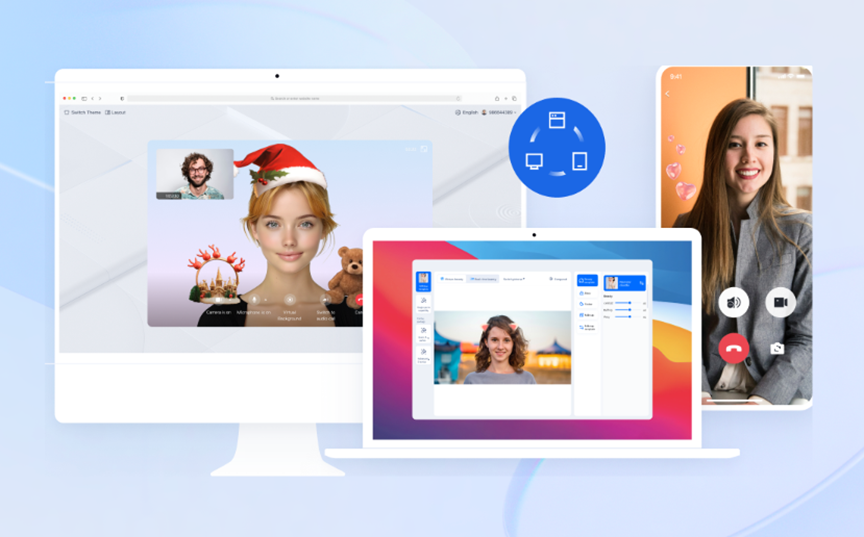

Virtual try-on technology is revolutionizing the retail experience by bridging the gap between digital and physical shopping. Through augmented reality (AR) and machine learning, these tools enable customers to visualize products on themselves—from clothing and accessories to makeup and furniture. More than a tech novelty, virtual try-ons are becoming essential for retailers navigating a highly competitive landscape. This solution addresses the modern shopper’s desire for personalization, convenience, and confidence, while giving businesses a strategic edge in growth and customer retention. As digital transformation accelerates globally, retailers must adapt quickly to changing expectations and behaviors to stay relevant, trusted, and profitable in the market.
The Business Case for Virtual Try-On
Boosting Conversion Rates and Sales
By integrating virtual try on solutions, retailers can transform static product displays into immersive shopping experiences. This interaction allows consumers to explore different styles, sizes, and options without physically trying them on—helping them make faster, more confident purchasing decisions. The ability to visualize products in context increases engagement, promotes impulse purchases, and enhances satisfaction, directly contributing to higher conversion rates and revenue growth. These interactive features allow retailers to differentiate themselves in saturated markets, capture short attention spans, and build more meaningful connections that turn browsers into committed, returning customers.
Reducing Return Rates and Operational Costs
One of the most significant pain points in retail is the high cost of returns, often stemming from unmet customer expectations. Virtual try-on technology addresses this by providing an accurate, realistic preview of how a product will look or fit. With improved decision-making, customers are less likely to return items, leading to lower reverse logistics costs and fewer operational disruptions. Retailers benefit from increased inventory stability and better profit margins over time. Furthermore, reducing return-related friction improves operational efficiency, shortens processing timelines, minimizes repackaging waste, and preserves customer satisfaction—factors essential for long-term profitability and brand loyalty.
Enhancing Customer Experience and Engagement
Personalization and Confidence in Purchases
Virtual try-ons cater to individual preferences, allowing customers to personalize products based on their unique style, size, and needs. This builds trust and confidence in purchasing decisions, enhancing overall satisfaction. When consumers feel the experience is tailored to them, it fosters brand loyalty and increases the likelihood of repeat purchases. This personalized approach reflects a shift in consumer behavior, where emotional connection, perceived value, and convenience weigh heavily in decision-making. Retailers who prioritize personalization can establish deeper rapport with their audiences, boosting lifetime value and maintaining relevance in an increasingly competitive digital landscape.
Interactive and Immersive Shopping Experiences
These tools offer dynamic, engaging shopping experiences that traditional methods lack. Customers can “try on” products virtually in their environment or on their person, creating a sense of fun and immersion. This not only extends time spent on retail platforms but also strengthens emotional connections to the products and brand. The result is a more memorable, compelling retail journey that keeps shoppers coming back. These virtual experiences also foster community sharing, social engagement, and positive buzz—driving organic marketing, increasing reach, and positioning the brand as forward-thinking and customer-obsessed in a crowded online space.
Strategic Advantages and Future Outlook
Gaining Competitive Edge and Market Reach
Incorporating virtual try-on technology signals innovation and forward-thinking, helping retailers stand out in a crowded market. As digital transformation reshapes consumer expectations, those who adopt such tools can better attract tech-savvy and convenience-driven shoppers. Offering these advanced experiences positions businesses to capture new market segments and retain a modern, engaged customer base. By prioritizing innovation, retailers can respond swiftly to market shifts, penetrate emerging global markets, and create scalable, differentiated solutions that outpace outdated competitors and position the brand as a technological leader within its vertical.
Sustainability and Data-Driven Insights
Virtual try-ons also support sustainability efforts by reducing product returns and minimizing waste. Shoppers make better-informed decisions, lowering the environmental footprint of each sale. Additionally, the data generated through virtual interactions can provide valuable insights into consumer preferences, product performance, and behavior patterns. Retailers can use this information to refine product development, personalize marketing, and stay ahead of evolving trends. By leveraging analytics, businesses can forecast demand more precisely, reduce overproduction, and align inventory planning with real-time shopper behavior—unlocking smarter, more efficient and environmentally conscious retail strategies.

Conclusion
Retailers that invest in virtual try-on solutions gain far more than a tech upgrade—they unlock new levels of customer engagement, sales efficiency, and market differentiation. As the retail industry continues to evolve, embracing tools that align with personalization, sustainability, and digital convenience is essential. Virtual try-on technology isn’t just a smart addition—it’s a strategic imperative for thriving in the future of retail. Those who lead the charge with this innovation will cultivate loyal audiences, elevate brand reputation, and set new benchmarks for immersive, customer-first shopping experiences in the digital economy.